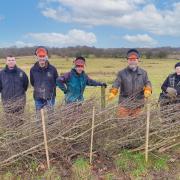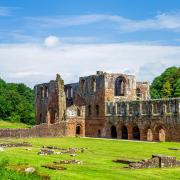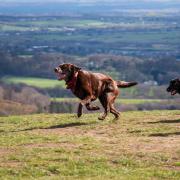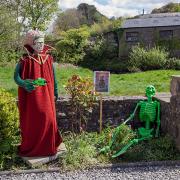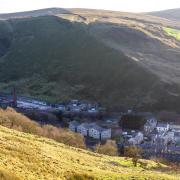Brockholes Nature Reserve at Preston is a popular spot for families, school trips, walkers and wildlife watchers. But it becomes a more magical place if you’re there with John Haddon and Jim Beattie, as the people who joined the first Lancashire Life walk discovered.
We followed a route from the floating visitor centre, along some of the Guild Wheel path, through ancient woodlands and past ponds and reedbeds.
A group of readers, advertisers and contributors to the magazine spent an enjoyable couple of hours exploring the Lancashire Wildlife Trus reserve and learning about the flora and fauna from our guides, Jim and John.
Jim has been a volunteer at Brockholes since the reserve's early days and John is the South Lancashire nature reserves officer for the Trust. You could fit what these two don’t know about the reserve on the back of a birch leaf.
Brockholes, which lies beside junction 31 of the M6, opened in 2011 after the closure of a huge sand and gravel quarry left a series of lakes. There are now more than 250 acres of trails and hides from which visitors can observe the many species of birds and animals in the woods and around the lakes.
On our circular route from the visitor centre, Jim and John pointed out scores of areas of interest, trees, fungi, flowers, plants and much more, revealing more about the fascinating world beneath the canopy, in the fields and among the reeds.
The path took us through Boilton Wood, to the north of the reserve, which Lancashire Life adopted earlier this year. Our walk was a chance to see and hear the wood’s flora and fauna which we have been featuring in the magazine every month.
Boilton is part of a network of woodlands on a ridge north of the Ribble that also includes Nab, Redscar and Tunbrook Woods. They offer a glimpse back into the untamed woodland landscapes of old and their mixture of sycamore, elm, ash and oak trees creates the perfect home for plants and animals that are specially adapted to life in ancient woods.
The plants in this woodland are well suited for the habitat and provide shelter for a lot of wildlife in every corner of the woods. Roe deer, foxes, moles and common shrew have all been seen here and common pipistrelle, soprano pipistrelle, noctule and Daubenton’s bats all roost in the holes of trees close to birds, like kestrels, woodcock, tawny owls, great-spotted woodpeckers and treecreepers.
We’ll be putting on our boots back on for a second Lancashire Life walk in the spring, with details to be announced early in the new year.
READ MORE: Walk route around Lancashire Life woodland at Brockholes Nature Reserve














